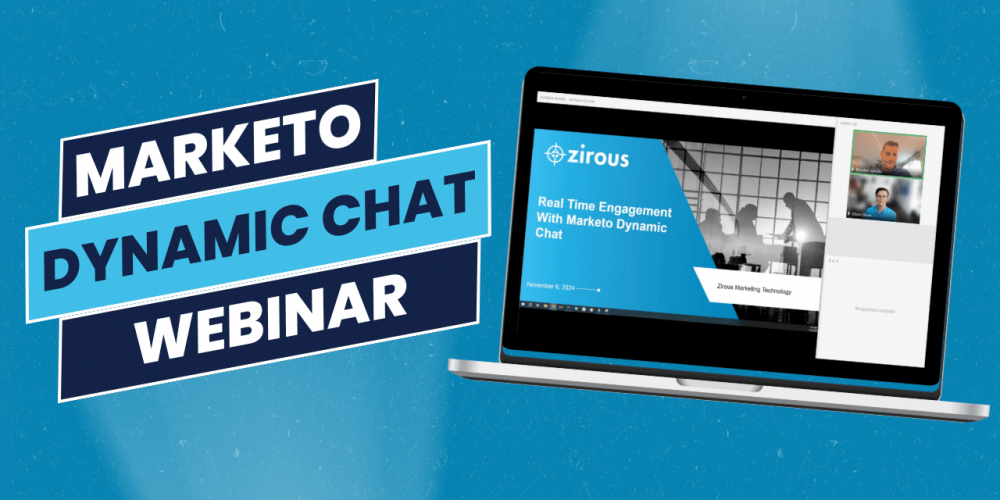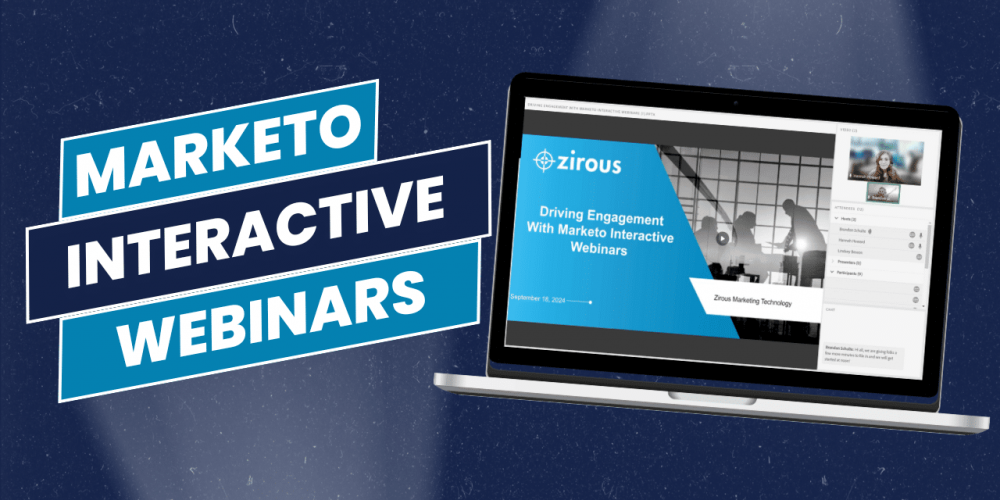Looking to enhance your website's engagement and capture valuable leads in…
Key Takeaways:
- When done right, email has an outsized return on investment compared to other more hyped channels.
- Managing lists and segmentation is perhaps the greatest driver of email success
- Marketing automation systems are only as powerful as the data that the system can utilize and targeted content so be sure to focus on integration and personalization.
Nearly every school-aged child has heard of Aesop’s fable “The Hare & the Tortoise.” The story details how slow and steady can overcome raw talent and speed simply by toiling away in a dedicated manner.
The same story could be told when comparing email to more hyped, and flashier, marketing channels including social media, search engine optimization (SEO), paid search/social and events/webinars. While those channels are important steps within the customer journey, few of them create the impact of an email nurturing program when done correctly.
In fact, a recent study found that on average you can expect a return of $42 for every dollar spent on email. That shouldn’t be surprising given that email is likely one of your most cost-effective marketing tools and scales better than almost every other channel. What isn’t always understood is the importance of email in the nurturing process as the glue that holds all of the other channels together. Rarely does a customer buy on their first interaction with your brand. Email has the chance to play a supporting, if not lead, role in most opportunities by helping nurture prospects with valuable content and promotions that lead to purchases.
Due to the value of email it is estimated that over 100 trillion emails are sent every year and the number of sends is expected to exceed 125 trillion by 2022. So with the average subscriber receiving countless emails per day we’ve found that our most successful clients leverage the following five principles to maximize the impact of their email channel.
List Management
With people switching jobs, unsubscribing from lists or simply no longer checking old email addresses, the average customer database decays at a rate of 2.1% per month or a little over 22% per year. In addition, people change preferences and may only be interested in specific products or services.
While even a stopped clock is right twice per day, using a batch and blast strategy rarely has a return greater than its cost. Companies that invest in segmentation by joining profile (demographic) and engagement (past purchases/product interest) data together are most likely to put the right messages in front of the right prospective buyer.
While micro targeting is important, the goal of segmentation is too often to maximize the quantity of each send. Instead we should think of where the customer is within their journey and target communications that make sense. Rarely do sellers only sell one product, so chances are each customer might be a relevant target for multiple sends. Companies that are able to understand what email to send and, even more importantly, which email not to send to a particular buyer generally will see the most engaged customers, which will correlate to revenue.
Second, companies too often fail to consider the impact of sending irrelevant communications. Sending the wrong message or offering to a customer can be a bigger detriment if the customer unsubscribes or disengages from a product message that didn’t appeal to them. In that case, it will be more difficult to get that customer to engage even when there is a product and message match in the future.
Last, it is important to clean your lists. Send reengagement campaigns to users who haven’t interacted with your content recently to make sure they still make sense to keep in your database. This will also ensure that you are focusing your messages on those most likely to convert.
Personalization
Former U.S. Speaker of the House Tip O’Neill was credited with the phrase “All politics is local.” The same is true in marketing. Users aren’t interested in how your product works for someone else; they want to know how it helps them. Marketers who are able to connect on a personal, emotional level increase their likelihood of a sale.
Start by using information you have on a customer in a personal way. Email is a great way to customize each individual’s product journey. For example, if someone is new to your brand your goal might be to give the user information about your products and capture information to continue the conversation. For someone working with a salesperson on an active opportunity, the goal might be to give information on how your product will solve their problem better than an alternative. For an existing customer the goal might be to upsell or cross-sell or maintain business by increasing loyalty.
Next, be sure to use content in ways that amplify your message to a specific audience or consumer. This might be using things like their name or company in your creative. Or it might mean offering products or content related to the customer’s interest. An example of this might be using information to fill a dynamic “you might also like” (YMAL) section of an email or a web page.
Last, reduce friction for consumers. If a user opens an email and clicks through to a landing page it is silly for them to need to fill out a form when you already have that data. Prepopulate that information based on a dynamic link or ask other secondary information that can be used in other marketing campaigns versus the same data you already have on that customer.
Testing
While it is always important to test and edit any creative going live digitally, when it comes to email you can’t fix the issue once the send button is hit — you can only send a correction or apology email. Be sure to institute a testing plan to verify the content is accurate but also that best practices are in place for deliverability.
Here are a few considerations to keep in mind:
- Have you utilized exit triggers to pull prospects out of a campaign? For example, if you send an individual an invite to a webinar or an abandoned cart email and the person takes you up on your offer, the worst thing you can do is send another email offering the same thing that they already took action on.
- Manage unsubscribes and bounces. Not only do these directly relate to email compliance but they also affect your deliverability ratings. Spam complaints and not removing bounces (potential spam traps) mean that your IP address could be blocked, meaning your targets may never see your message.
- Utilize deliverability and inbox placement tools like Litmus to see how your content works in different email clients, as well as potential issues that will be flagged as spam or cause emails to not be delivered altogether.
- Look at your sending rate per IP based on send. This really only applies to large sends to the same domain, but sometimes IP addresses restrict the number of connections at any one time. In such cases it is good to use a slower send over a number of hours or, if the send is over seven figures, a number of days to reduce technical blocks.
Automation
When it comes to automation most marketers think of email marketing automation tools like Pardot, Eloqua, Marketo, Mailchimp and more. And all of those platforms help automate the email process with their ability to build lists, create templates and send emails. We’ve found that having an email platform is just table stakes when it comes to using email to create demand. Of greater importance is the ability of those systems to set up dynamic journeys for customers as they work through your sales cycle in addition to their ability to collect customer data from various other platforms in real time to be used in campaigns.
These journeys could include things like welcome campaigns to help onboard customers when their excitement for your product is at its highest or it could include retargeting or abandoned cart campaigns for customers who have shown interest but for whatever reason didn’t convert. Marketing automation is also the key to make your staff more efficient.
A senior leader at a firm headquartered in the Midwest but with an international presence once remarked to me how exciting it was to have revenue coming in at all hours of the day even while his team was sleeping. And while globalization and e-commerce played a role in that success so did automation. The ability to reach users at all hours of the day regardless of time zone, language and currency, to present dynamic messages that resonate with that customer, allows marketing teams to work smarter not harder. Few things will positively impact your bottom line as building an automation ecosystem that learns what customers need and responds in kind, when they are ready to buy — on their schedule, not the seller’s schedule.
Integration
The average firm uses over 120 different applications to manage different aspects of its business. While not every application contains customer data, a sizable percentage of them do when it comes to customer databases, web interactions, e-commerce systems, CRM, marketing automation, event management and more. It’s critical to have the ability to integrate transactional records and stitch customer records together based on a standard variable like email address or user ID.
The ability of these applications to integrate with a marketing automation system, customer data platform (CDP) or data lake is paramount in your ability to send effective communications to customers. Too often systems are siloed and don’t work together, which creates manual processes and significant time needed to get the right customer segment for a campaign.
As a rule of thumb we believe a hub-and-spoke system with a CDP joining these various data sets is the best way to go. As a Tealium partner we help clients maximize the effectiveness of first-party data to orchestrate journeys in all channels, but especially email, to meet customer demand. By focusing on its data strategy, personas and orchestration any company can turn data into a competitive advantage using email as well as other mediums as distribution channels to generate demand.
The beauty of an email is that you can use an incremental strategy to start seeing success right away. Even doing one or a few of the strategies outlined can pay dividends almost immediately. Zirous, a technology data and insights company established by leading communications, IT and email experts, is here to help you every step of the way.
We speak the language of business and technology to create customer-centric organizations. Contact us today to learn more.




This Post Has 0 Comments